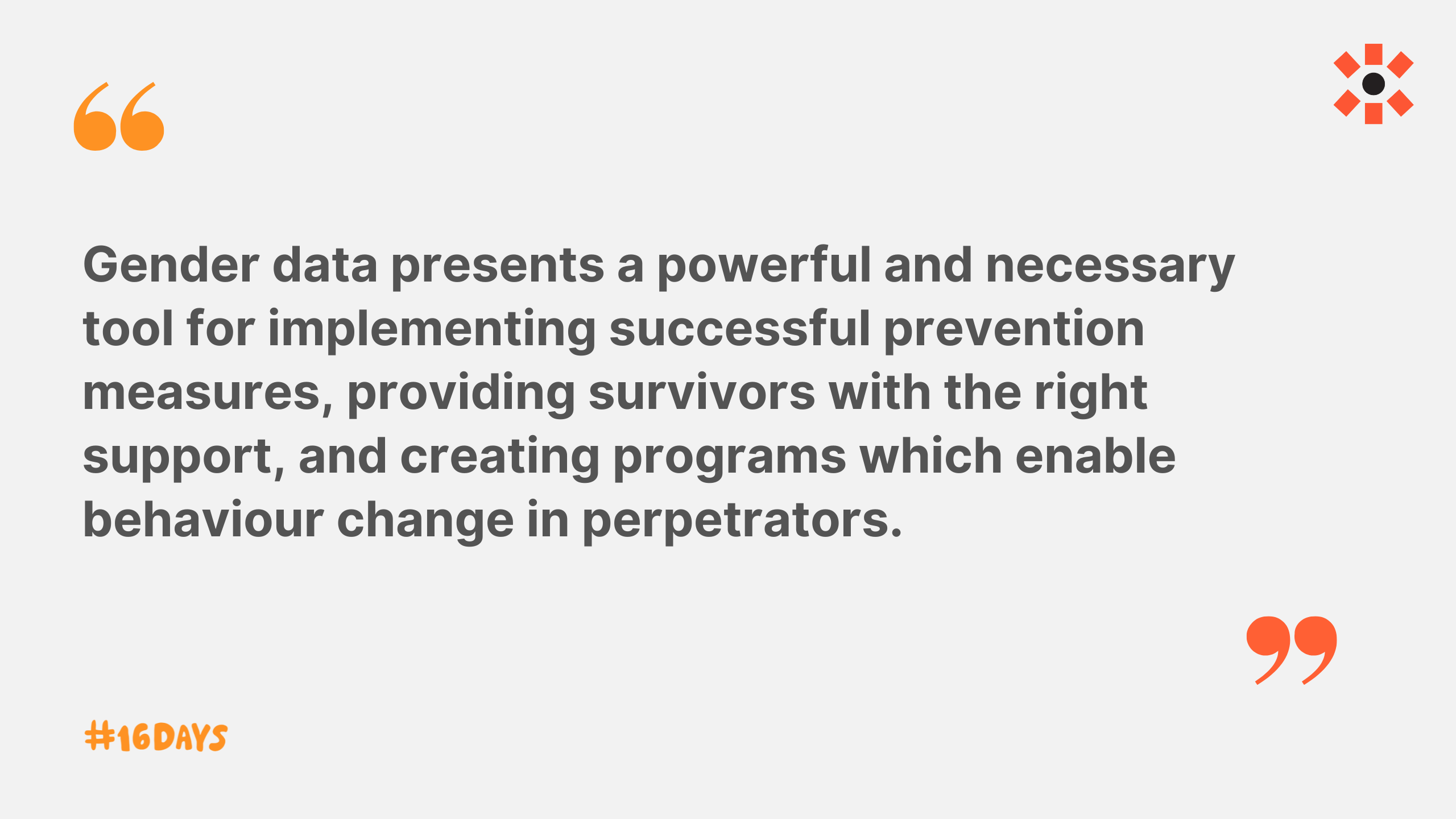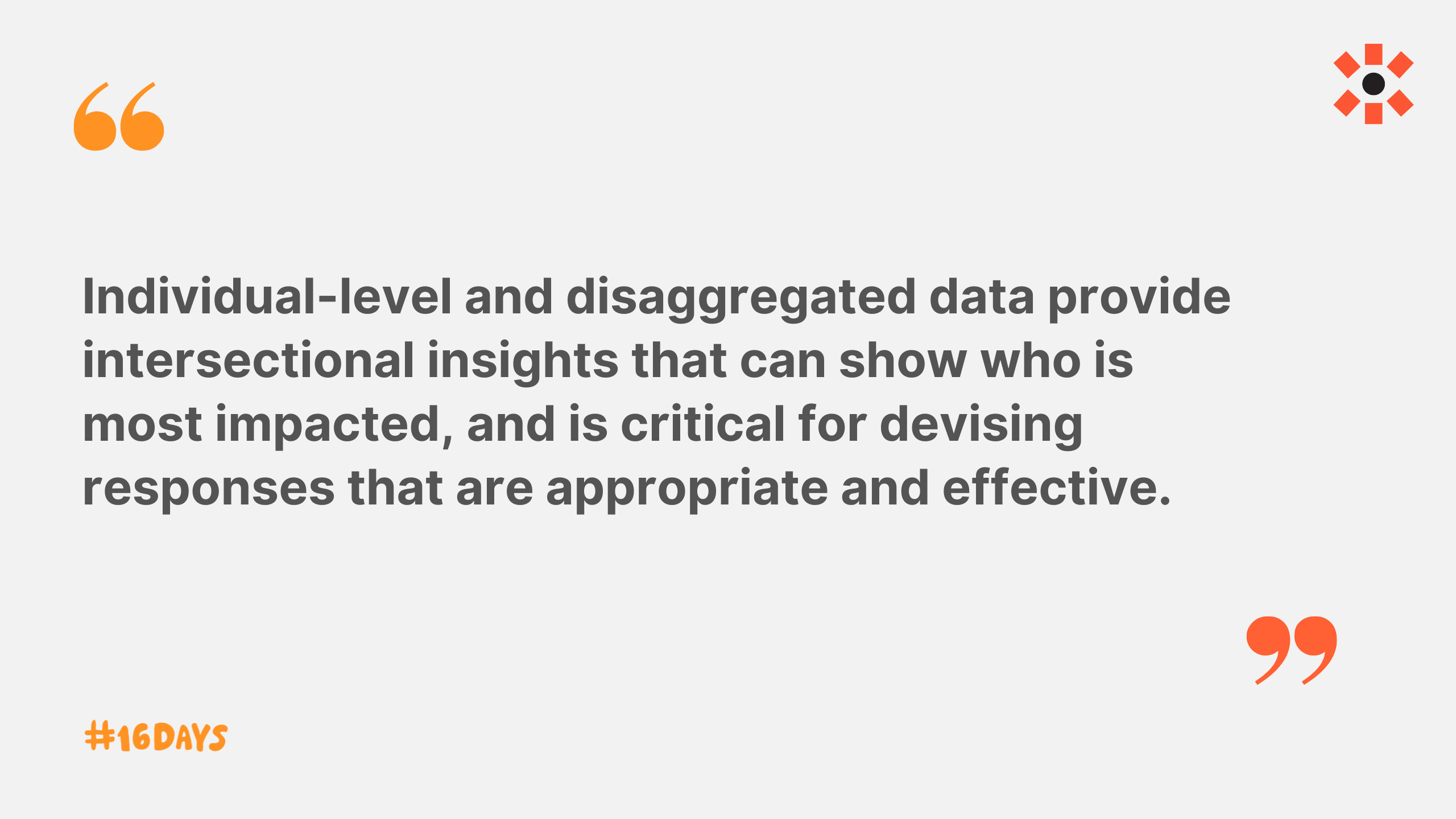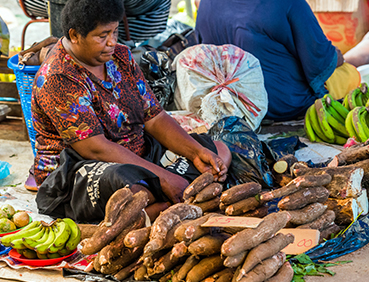The role of gender-based violence data
More than five women and girls are killed every hour by someone in their own family. In 2021, this amounted to around 45,000 women and girls worldwide. This number is alarmingly high, and yet the true scale of feminicide may be much higher, according to a new report by UN Women.
Gender-based violence (GBV) is a global epidemic. It one of the most pervasive human rights violations and is rooted in gender inequality, unequal power dynamics, and harmful social norms and gender stereotypes. It cuts across all countries and cultures, affecting an estimated 736 million women worldwide—almost one in three—who have been subjected to physical and/or sexual violence at least once in their life. This figure that has remained largely unchanged for over a decade. But these are not just numbers. Behind every statistic is a person, and urgent action is required to address GBV and reverse these patterns.
The tools and knowledge to prevent GBV already exist, and gender data plays an important role in designing programs to address and prevent GBV and create safer futures. There are a range of initiatives collecting and monitoring GBV data from grassroots organisations and feminist movements to global multilateral bodies. But gender data gaps persist and this limits action. More data is needed to improve the evidence base and strengthen responses to GBV, and we need to make better use of the gender data that already exists.
The role of data
Gender data is essential to preventing and responding to gender-based violence effectively and appropriately. Data influences the full spectrum of activities – from primary prevention, which involves addressing the drivers of GBV by delivering society-wide initiatives with the ultimate goal of stopping violence before it occurs, to response activities which encompass support services for survivors and initiatives that hold perpetrators to account and enable behaviour change to stop it from happening again. Data also informs ‘recovery’ activities or the ongoing processes that enable survivors to find safety, health, wellbeing, healing, and thrive in all areas of life.
In order to take action to address GBV effectively, we need to understand the issue, its scale, and who is most impacted including the groups that face higher rates of violence. Individual-level and disaggregated data provide intersectional insights that can show who is most impacted, and is critical for devising responses that are appropriate and effective.
At a wider scale, improving data on gender-based violence is also a critical step towards developing better, more responsive, and appropriate policies and programs. As an evidence base, GBV data can show where to target resources and what kinds of support are required, while also serving an important monitoring and evaluation function to determine the efficacy of these programs.

While relevant data is key to implementing successful prevention measures and providing survivors with the right support, the collection of sex-disaggregated and other crucial data remains a low priority for many – a gap that has become all the more serious in light of a spike in the prevalence of GBV due to intersecting crises of COVID-19, climate change, global conflict and economic instability.
The challenges of collecting GBV data
The difficulties and challenges associated with collecting high-quality, timely, and robust GBV data are numerous. Surveys are a common method to collect GBV data, but they are not without their limitations. Questions of ethics arise especially as they relate to safety and privacy, which is further complicated when collecting data online or over the phone – a common practice during COVID-19 which disrupted face-to-face data collection methods. Language and cultural contexts may influence understandings of GBV, and shame and stigma are still widely associated with GBV which may reduce reporting.
Another common method of collecting GBV statistics is via administrative data, which is usually based on health or crime data. A significant limitation of this approach is that it only reflects survivors who seek support from services. Yet, we know that less than 40 percent of the women who experience violence seek help of any sort and among those who seek help, most turn to family and friends in the majority of countries with available data. Very few survivors look to formal institutions, such as police and health services, in which less than 10 percent of those seeking help appealed to the police.

A further compounding factor about administrative data is that it requires services to accurately recognise GBV in systems that can record GBV in a meaningful way. Often aggregate, this data usually cannot show who is most at risk or impacted. Privacy and safety risks are also associated with collecting and using this data. Inclusive data and intersectional analysis are critical to delivering programs and support services that are cultural safe and appropriate. This is particularly true in an Australian context where First Nations women who experience family violence or GBV are often misidentified as the perpetrator.
The Wiyir Yani U Thangani First Nations Women’s Safety Policy Forum Outcomes Report showed that “disproportionate rates of all forms of violence, assault, murder and the disappearance of First Nations women and children is a national crisis caused and perpetuated by structural marginalisation, discrimination, and inequalities.” Despite this, First Nations women are central to providing the care and work to keep family and kin safe and well, enable healing, and implement culturally responsive violence prevention approaches.
The report also identified investing in First Nations data sovereignty and data governance as a key system enabler and tenet of self-determination. This would further ensure significant improvements to data collection and research “to form a comprehensive understanding of violence, what works to prevent violence, and to be able to measure and track progress toward ending all forms of violence experienced by women, children, and families”.
Gender data presents a powerful and necessary tool for implementing successful prevention measures, providing survivors with the right support, and creating programs which enable behaviour change in perpetrators. GBV is not inventible. It is entirely preventable and gender data is a critical first step towards creating safer futures.


Comments